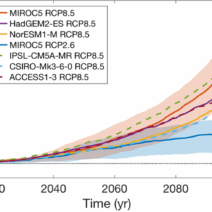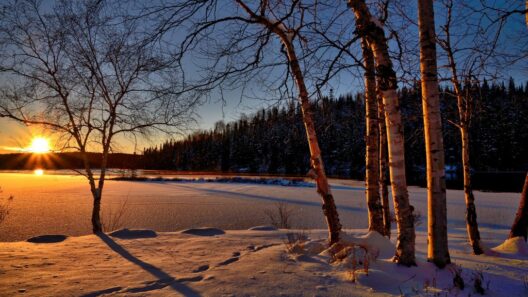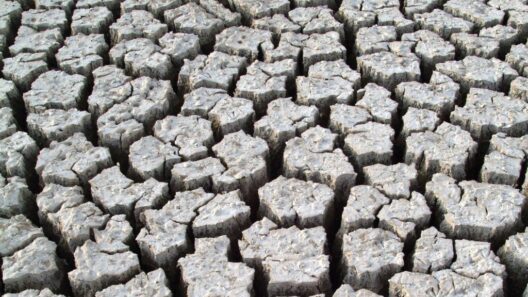Madagascar, the world’s fourth-largest island, is a place of extraordinary diversity, playing host to an array of unique species and fragile ecosystems. The island’s climate is multifaceted, creating an intriguing tapestry of ecological extremes that can both nurture and devastate its remarkable biodiversity. Understanding the intricacies of Madagascar’s climate will not only enlighten our perspective but also spotlight the urgent need for environmental stewardship.
Located in the Indian Ocean, Madagascar is situated just off the southeastern coast of Africa. This geographical placement results in a climate that varies significantly from one region to another. The island predominantly experiences a tropical climate, yet it is divided into distinct climatic zones that range from arid to humid environments. Such variation plays an integral role in shaping the ecosystems and species that inhabit each area.
The western regions of Madagascar are characterized by a dry tropical climate. Here, the rainfall is markedly sporadic, leading to pronounced dry seasons that can last for several months. This stark environment fosters unique adaptations among flora and fauna. For instance, the infamous baobab trees have evolved to store water in their bulbous trunks, a stunning example of resilience in the face of climate extremes. The aridity of this region also supports sparser vegetation, which can be seen in the wild spiny forests that thrive amidst the harsh conditions.
In contrast, the eastern side of the island is a veritable rainforest, receiving copious amounts of rainfall throughout the year. This humid tropical climate gives rise to vast montane forests teeming with endemic species, including the iconic lemurs and myriad species of orchids. The richness of biodiversity here is staggering, with approximately 70% of all flora and fauna found nowhere else on Earth. However, this lush environment is not immune to the impacts of climate change. Increased rainfall variability has become a daunting threat, leading to flooding and landslides that could irrevocably alter the landscape and the intricate relationships within it.
The central highlands present yet another climatic anomaly. Here, the altitude generates a temperate climate with cooler temperatures, allowing for agricultural endeavors that are distinct from the surrounding climates. Rice cultivation flourishes in these highlands, showcasing a deep connection between the climate and the livelihoods of local populations. Yet, as the global climate shifts, these agricultural systems are facing unprecedented challenges. Variability in weather patterns and increasing instances of extreme weather threaten food security and the socioeconomic fabric of the communities that depend on these agricultural systems.
Summers in Madagascar are typically characterized by cyclones, which form in the Indian Ocean and can wreak havoc across the island. Cyclones contribute to the coastal flood risks and pose serious threats to both human settlements and the rich biodiversity that characterizes these areas. The winds, rains, and resulting storm surges exacerbate erosion and threaten coastal habitats, including mangroves and coral reefs that play vital roles in the ecosystem. Understanding these cycles becomes crucial, as they are intrinsically linked to the health of the island’s marine biodiversity.
With the advent of climate change, Madagascar’s climate is undergoing a profound transformation. Scientists anticipate that rising sea levels will inundate low-lying coastal areas, while altering rainfall patterns may lead to prolonged droughts in the interior. Such scenarios foreshadow a future marked by ecological collapse and loss of endemic species, which are already succumbing to habitat destruction and environmental stressors. The wildlife and ecosystems that have evolved over millennia now stand on the precipice of extinction.
To combat these potentially catastrophic outcomes, local and international conservation efforts play an indispensable role. Initiatives aimed at preserving Madagascar’s unique biodiversity engage in activities such as habitat restoration, sustainable agriculture practices, and environmental education for local communities. By empowering citizens with knowledge of sustainable practices and the ecological importance of their environment, a grassroots movement toward conservation can take hold.
Moreover, Madagascar is home to a wealth of indigenous knowledge, which can provide invaluable insights into sustainable practices grounded in an understanding of the local climate. The cultural connection between the Malagasy people and their natural environment offers a unique opportunity to harmonize conservation efforts with traditional ecological wisdom, creating a multifaceted approach to protecting the island’s fragile ecosystems.
In conclusion, Madagascar’s climate is a mosaic of extremes, presenting both challenges and opportunities for its unparalleled biodiversity. As we traverse the complexities of its environmental landscape, it becomes evident that a shift in perspective is essential. By embracing a holistic understanding of the island’s ecological intricacies and advocating for its protection, we can work towards a future where Madagascar’s unique ecosystems are preserved for generations to come. The fate of Madagascar hangs in the balance, and it is a call to action for environmental stewardship and global consciousness. In every drop of rain and gust of wind, there lies a story of survival — a narrative that beckons us to understand, respect, and protect the wonders of this enchanting island.







